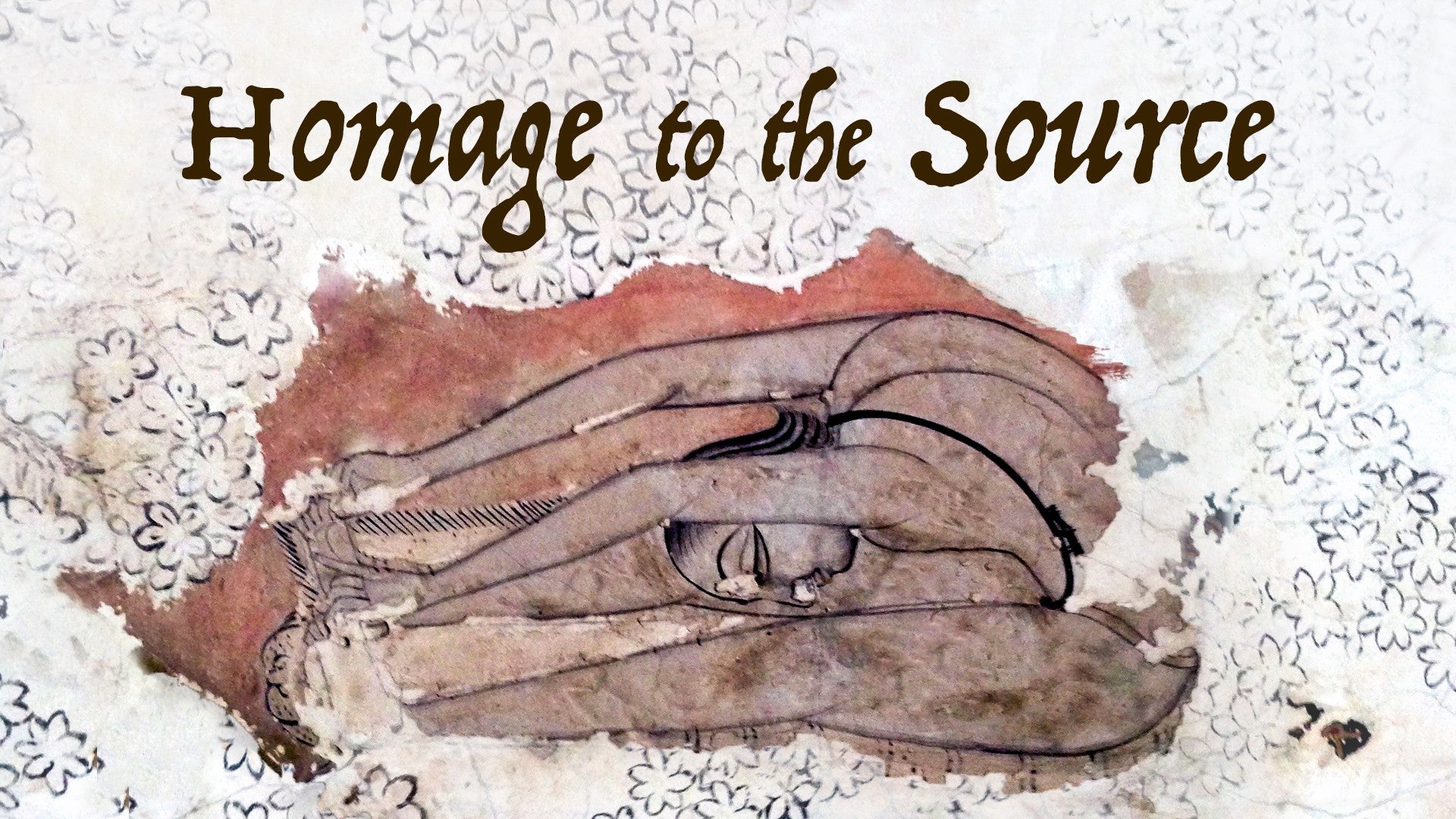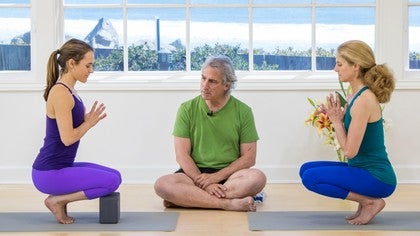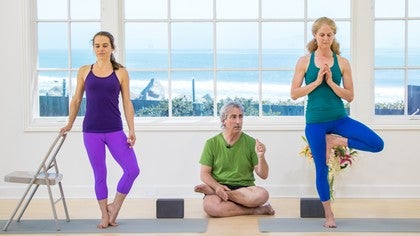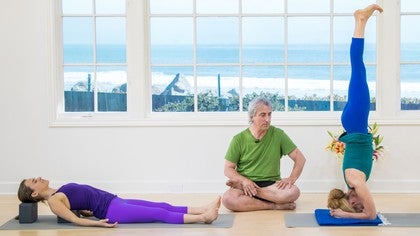Description
This version of a squatting posture is the ancestor to what we now commonly call Chair Pose. Richard walks us through the nuances of the use of Anjali Mudra in the pose. Demanding on the feet, legs, and balance, try keeping a block nearby for support.
About This Video
Transcript
Read Full Transcript
Hi, we're here with Betsy and Alana, and we are going to demonstrate standing, well, nowadays it's a standing pose, it's called Utkatasana, which means the superior pose, but 350 years ago it was a slightly different position, a little bit more of a challenge, I think, for most people. I'll ask the helpers to stand up, please, feet hip-width. Now, you may know that Utkatasana nowadays is sort of a semi-squat with the heels on the floor, but it was done a little bit differently, as I said, in the Garanda Samhita. So what you want to do is take an exhalation and start to squat down, and as you come down, raise your heels off the floor so that when you're in the full squat, you're sitting on your heels. I'll ask them to start to come down now, keeping the front of the torso long.
And we're going to help Alana a little bit out with her position by putting a block underneath her knees. So if you'd slowly start to bend the knees, as you do, lifting the heels away from the floor, coming up on the balls of the feet, yes. And as you can see, Alana is going to position the block on one of its sides under her knees. That's going to help her stability. Now, you can rest the hands on the knees if you like, as they're doing here, or you can take your hands together in Anjali Mudra.
Now, Anjali has a number of symbolic interpretations, but it also has a very practical application as well. And you want to make sure that when you do Anjali, you make the most use of it. So you want to first spread your palms against one another, which will help to open the shoulder blades across the back of the torso. And then secondly, you want to press the palms firmly against each other. Now, you have to be very careful that you don't let your dominant hand overpower the non-dominant.
So if that's the case, you want to withdraw some of the force of the dominant hand. And so the hands are pressing more or less evenly into each other. And with that pressure, that helps the shoulder blades come into the back to help lift the stern bone up. This is Utkatasana, and this is the way it was performed 350 years ago. Nicely done.
Now, I want you to keep your hands in that place. And with an inhalation, straighten your knees and put your heels back down the floor and stand back up slowly. Very good. And thank you very much, Utkatasana.






You need to be a subscriber to post a comment.
Please Log In or Create an Account to start your free trial.